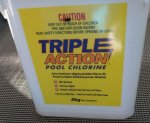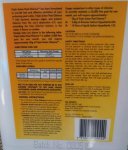Hi all,
I've just purchased a new inflatable pool for the kids and have some questions:
https://www.bigw.com.au/product/driclad-10ft-fast-set-pool-set/p/WCC100000000039480/
Brand Name Driclad
Product Height 76 cm
Product Length 305 cm
Product Width 305 cm
The pool comes with a filter pump. The question is when should I activate the pump? Always or only when the kids are in the pool or once a day or any other rule of thumb...
Chlorine.
What is the rule of thumb for Chlorine? I understand that there are some measurement tools to the test the pH and etc, but what is the initial dose I should apply?
To pool is round, and the water height is 30 cm. The Chlorine I purchased comes in a form of a powder not tablet.
Appreciate your input.
Thanks
Boris
I've just purchased a new inflatable pool for the kids and have some questions:
https://www.bigw.com.au/product/driclad-10ft-fast-set-pool-set/p/WCC100000000039480/
Brand Name Driclad
Product Height 76 cm
Product Length 305 cm
Product Width 305 cm
The pool comes with a filter pump. The question is when should I activate the pump? Always or only when the kids are in the pool or once a day or any other rule of thumb...
Chlorine.
What is the rule of thumb for Chlorine? I understand that there are some measurement tools to the test the pH and etc, but what is the initial dose I should apply?
To pool is round, and the water height is 30 cm. The Chlorine I purchased comes in a form of a powder not tablet.
Appreciate your input.
Thanks
Boris




